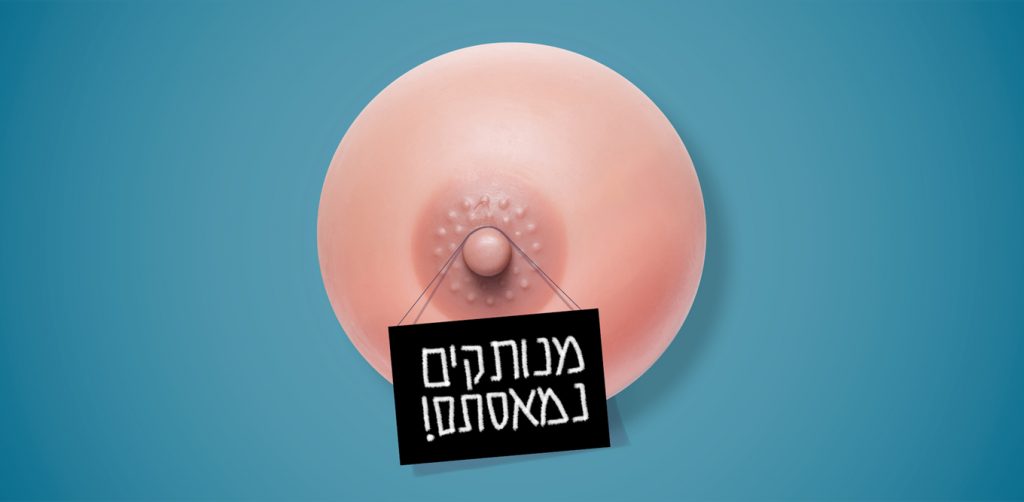A few women came, took off their shirts, raised their signs, and from that point on, the road to a media storm was a short one. Even when it comes to a stunt that is hundreds of years old, everyone still has something to say
The summer of 2020 has demonstrated that women’s breasts have remained a big deal. As if 200 thousand years haven’t passed since the notorious Tapuzina commercial, plus a candid camera movie starring Yehuda Barkan and Danuta that kicked up quite a storm in Israeli theaters. Apparently, thousands of well-reasoned op-eds will fail to come up with a full explanation as to why a male bare chest will never generate a wave of response of the kind we experienced following what has been called the “topless protest”. Some things will forever remain hidden.
A few women came, took off their shirts, raised their signs, and from that point on, the road to a media storm was a short one. Even when it comes to a stunt that is hundreds of years old, everyone still has something to say. Is this the sluttification of the protest? Does it prove that at times like this, anything goes? What is really legitimate in generating public opinion? Where are the boundaries of good taste? And most important: what does Yair Netanyahu have to tweet about it? (Okay, just kidding…)
Critics of the controversial tactic have overlooked one significant fact: It’s theirs, their initiative, their right. After years of conquest of female breasts and objectifying them to death, a group of conscious women stood up and said, we understand what we’re doing, and that is exactly why – here are our breasts in all their glory, they’re necessary, and they’re also subject to the force of gravity. And that’s okay. Breasts are just breasts, and if they still grab attention in the town square – right in your face – why not make use of them? It’s definitely better than being sprayed right in the face by water cannons.


